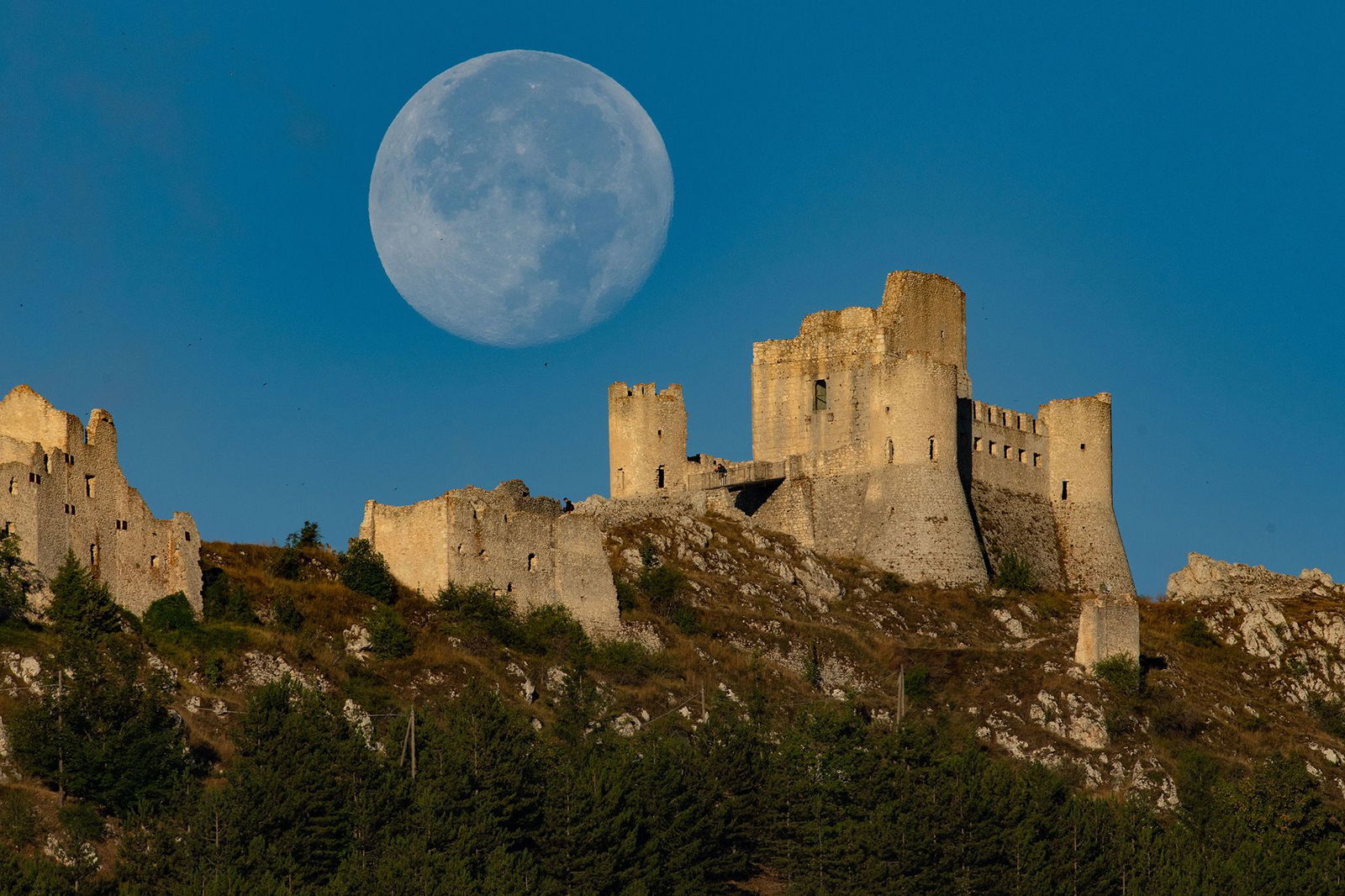How to see the full moon and planets this weekend

The full sturgeon moon appears in the sky over Rocca Calascio Castle in Calascio
By Gina Park, CNN
(CNN) — Sky-gazers can catch a glimpse of the full moon at its peak illumination this week.
August’s full moon, also called the sturgeon moon, will be visible from Friday night into the early hours of Saturday. It will be at its fullest around 3:55 a.m. ET Saturday, according to EarthSky.
“The good thing about the full moon is that even if you’re in a big city with a lot of city lights, you can really appreciate the full moon,” said Kelsey Young, the lead for the lunar science objectives of NASA’s Artemis II mission. For the most spectacular view, however, she advises that the moon be observed away from the glow of the city.
Though the moon will be at its peak in the middle of the night, it will appear to be full for a few days, Young said. “Even at a much more reasonable time of night, you can peek outside and see the full moon, especially if you’re away from ambient light,” she added.
Historically, August’s full moon is called the sturgeon moon because it marks the time of year when sturgeon fish are most readily caught, according to The Old Farmer’s Almanac.
Other monikers for August’s full moon from indigenous tribes are indicative of the end of summer. The Cree, located primarily in Canada, know it as the flying up moon, denoting the time of year when young birds are learning to fly, while the Assiniboine people, who are originally from the Northern Great Plains, call it the black cherries moon to mark when cherries are becoming ripe.
Keep an eye out for planets and meteors
The full moon will be accompanied by three meteor showers: the Southern Delta Aquariids, the Alpha Capricornids and the Perseids.
The Aquariid and Capricornid showers reached their peaks last week, while the Perseid shower is expected to peak next week. It is unlikely that the showers will be visible under the full moon.
However, you may be able to catch a glimpse of Venus and Jupiter, which will be observable in the early morning hours throughout August. The planets will appear close together in the sky Tuesday and Wednesday mornings — a bright celestial meetup.
During the second half of the month, early in the mornings, Mercury will be visible 20 to 30 degrees below Venus on the horizon, Young said. You can also see Mars “if you look to the west right after sunset,” she said.
Upcoming full moons
Look out for four more full moons this year, with supermoons — full moons that appear while the moon is at its closest to Earth — occurring in October, November and December.
Here’s the list of full moons remaining in 2025, according to the Farmers’ Almanac:
- September 7: Corn moon
- October 6: Harvest moon
- November 5: Beaver moon
- December 4: Cold moon
Lunar and solar eclipses in 2025
Two eclipse events will take place as summer draws to a close.
A total lunar eclipse will be visible in Europe, Asia, Australia, Africa, parts of eastern South America, Alaska and Antarctica on September 7 and 8, according to Time and Date.
A lunar eclipse occurs when the moon passes directly into Earth’s shadow as the sun, Earth and the moon line up. This causes the moon to appear darker or dimmed.
When the moon sits in the darkest part of Earth’s shadow, the sun’s rays peek out from behind the Earth and the light refracts, giving the moon a reddish hue, according to London’s Natural History Museum. Some people call the result a “blood moon.”
Two weeks after the total lunar eclipse, a partial solar eclipse will be visible in parts of Australia, the Atlantic, the Pacific and Antarctica on September 21.
Solar eclipses occur when the moon moves between the sun and Earth. In the case of a partial solar eclipse, the moon will not fully block out the sun, according to NASA. It creates a crescent — as if the moon took a bite out of the sun.
The-CNN-Wire
™ & © 2025 Cable News Network, Inc., a Warner Bros. Discovery Company. All rights reserved.


